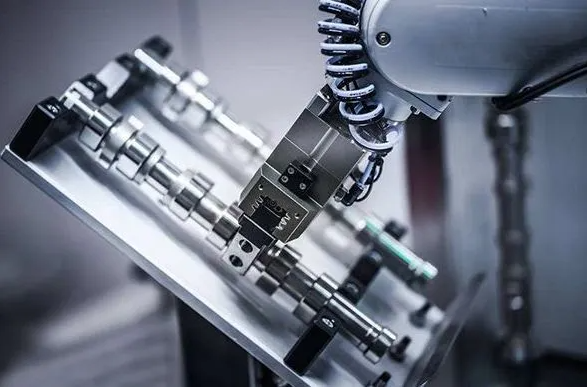Advantages of Five-Axis CNC Machining

To fully appreciate the advantages of five-axis machining, it is essential to first define what a five-axis machine tool entails. As the terminology suggests, a five-axis machine (5 Axis Machining) operates along three linear axes (X, Y, Z) while integrating two additional rotational axes. These two rotational axes (A, B, C) expand the movement capabilities, allowing for greater versatility in meeting a wide range of product specifications.
Manufacturers are consistently innovating in the design of five-axis machining centers, aiming to develop novel movement patterns that address diverse operational requirements. The most prevalent mechanical configurations in today’s market typically include:
- Dual Swiveling Head: Two rotational coordinates that directly influence the tool axis orientation.
- Vertical-Type Swiveling Head: Two coordinate axes located at the tool tip, with rotational axes not perpendicular to the linear axes.
- Dual Rotary Table: Two rotational coordinates that facilitate spatial rotation.
- Vertical-Type Worktable: Two coordinate axes positioned on the worktable, with the rotational axes not perpendicular to the linear axes.
- One Swiveling and One Rotating Form: One rotational coordinate impacting the tool and another affecting the workpiece.
Note: If a rotational axis is not perpendicular to a linear axis, it is classified as a “vertical-type” axis.
Having explored these configurations, it becomes evident how five-axis machines operate. But what distinct advantages do they offer in machining when compared to traditional three-axis machines? Let’s investigate the prominent features of five-axis machining.
Key Advantages of Five-Axis Machining
When evaluating the characteristics of five-axis machines, it is crucial to juxtapose them with traditional three-axis devices. Common in production environments, three-axis machines appear in various formats, including vertical, horizontal, and gantry types. These machines generally employ methods such as end milling, side milling, and contouring with ball-end mills. However, they share a significant limitation: the tool axis remains static during machining, relying solely on the interpolation of the X, Y, and Z linear axes for movement. This constraint often results in inefficiencies, subpar surface quality, and, in some cases, an inability to process specific components.
In contrast, five-axis CNC machines provide several compelling advantages:
-
Optimal Cutting Conditions
Five-axis machining ensures the tool operates under ideal cutting conditions. Unlike three-axis systems, where the cutting performance deteriorates as the tool approaches the edges of the workpiece, five-axis machines can adjust the worktable orientation to maintain optimal conditions. This adaptability leads to significantly improved surface quality by preventing situations where the cutting tool's center point speed reaches zero. -
Minimized Tool Interference
In aerospace applications, such as the machining of impellers and blades, three-axis machines frequently encounter interference challenges. Five-axis machines adeptly navigate these obstacles, allowing the use of shorter tools that enhance system rigidity and reduce the overall number of tools required, thereby negating the need for specialized tooling. -
Reduced Setup Times
Five-axis machining centers optimize operational efficiency by minimizing the number of fixtures necessary. With a single setup, five-axis machines can process multiple sides of a component, improving accuracy and decreasing the frequency of realignment. This streamlining results in lower fixture costs, reduced floor space requirements, and decreased maintenance expenses. -
Enhanced Quality and Efficiency
The capability of five-axis machines to perform side milling significantly boosts processing efficiency. This enhancement not only shortens production cycles but also simplifies production management and scheduling, particularly for complex components where traditional methodologies may struggle. -
Accelerated Product Development Cycles
In sectors such as aerospace and automotive, where components often feature intricate designs and rigorous precision demands, five-axis CNC machining centers offer the flexibility and accuracy essential for streamlining the development process. This capability considerably shortens research and development cycles, thereby increasing the success rates of new products.
In conclusion, five-axis CNC machining signifies a substantial leap forward from conventional three-axis systems, delivering enhanced efficiency, reduced costs, and superior quality across a diverse array of applications. From my perspective, the investment in five-axis technology is not just a choice but a strategic advantage for manufacturers aiming to excel in competitive markets.
- Art
- Causes
- Crafts
- Dance
- Drinks
- Film
- Fitness
- Food
- Jogos
- Gardening
- Health
- Início
- Literature
- Music
- Networking
- Outro
- Party
- Religion
- Shopping
- Sports
- Theater
- Wellness
- Travels

